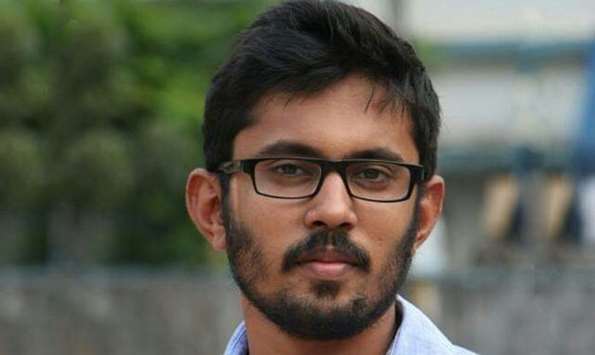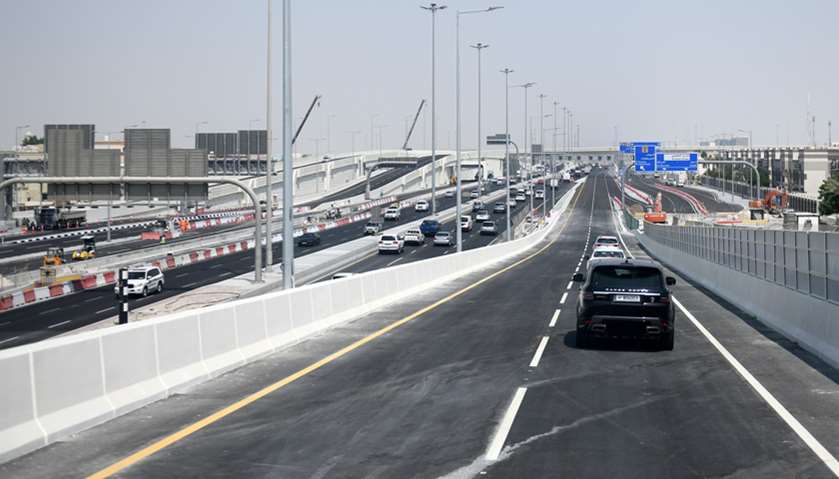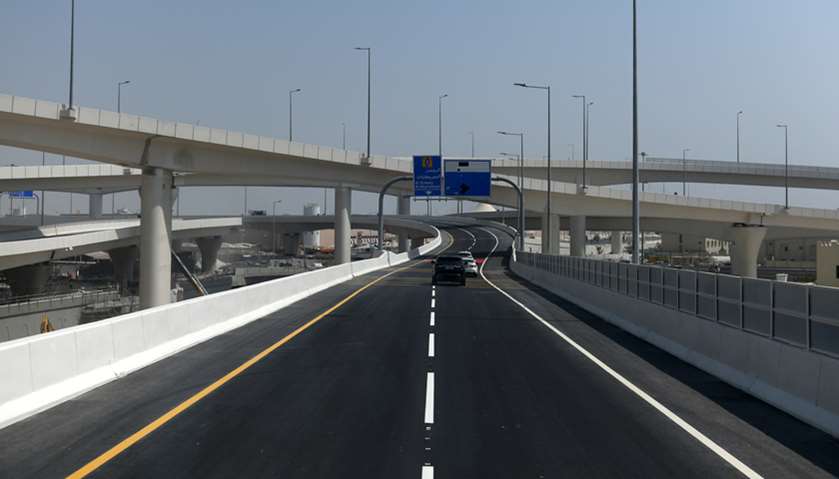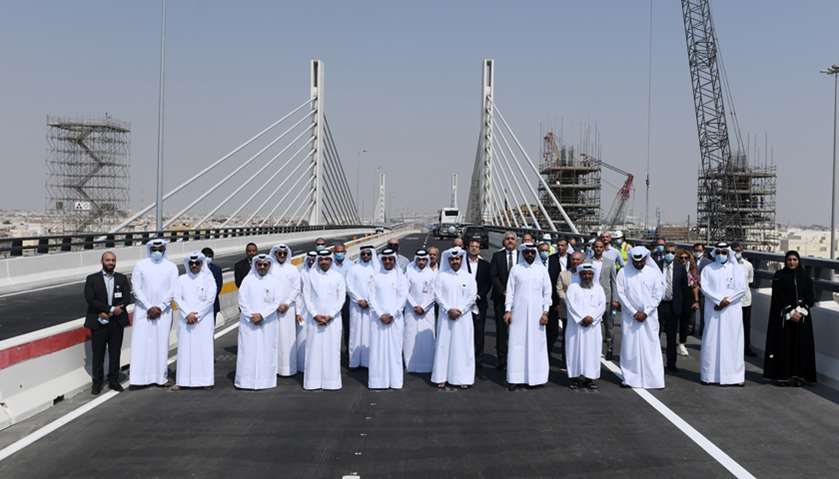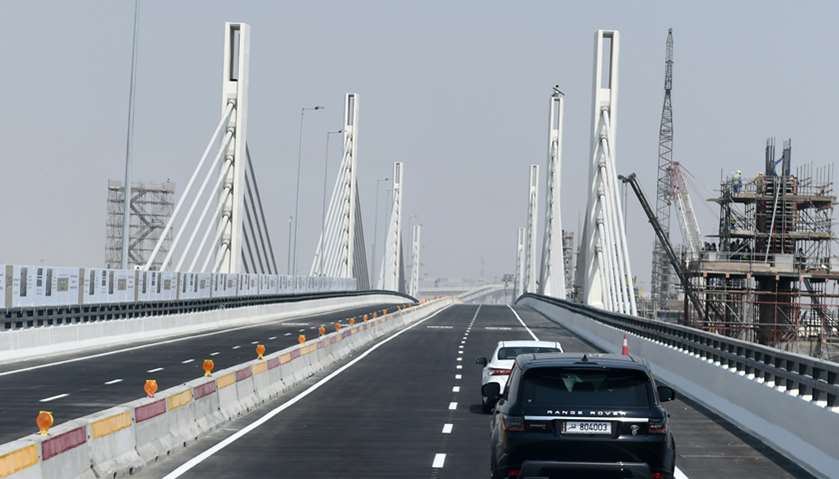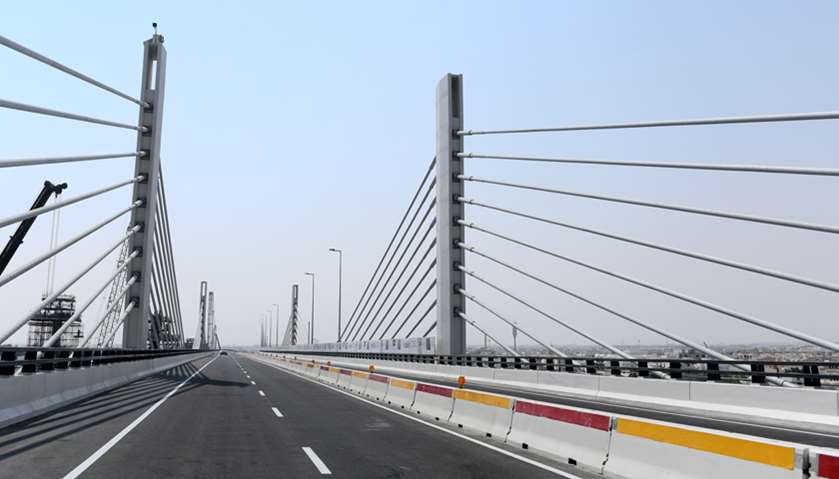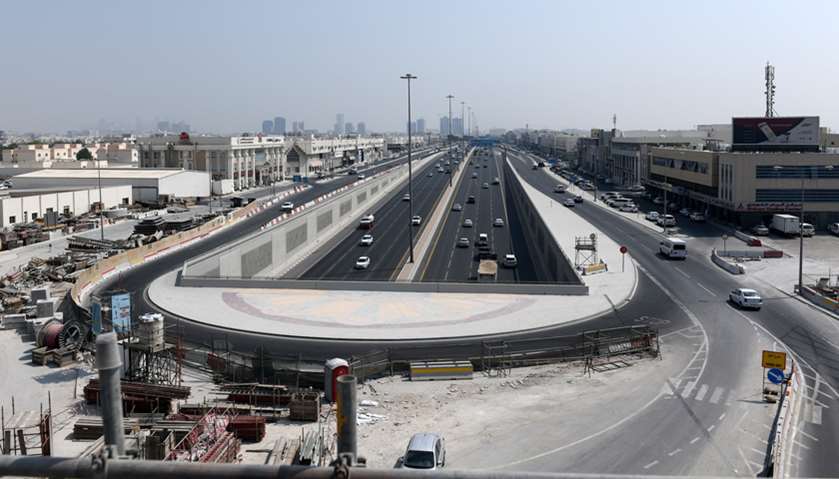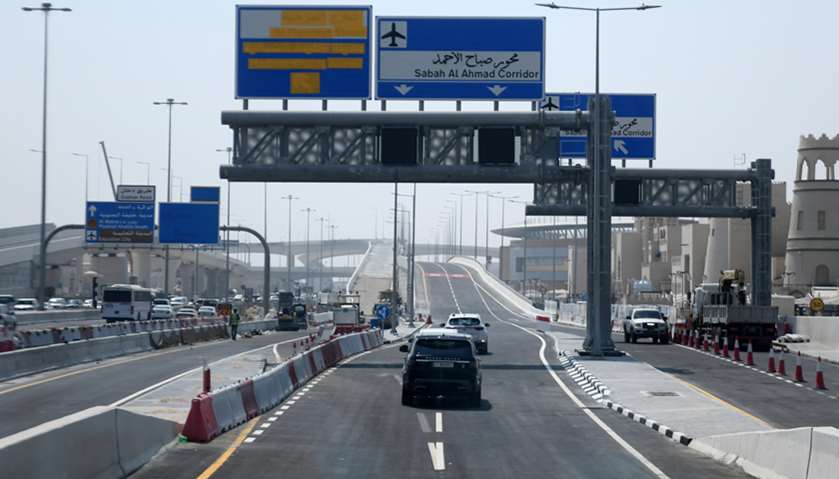The Public Works Authority (Ashghal) on Saturday partially opened the country’s first cable-stayed bridge as part of the Sabah Al Ahmad Corridor.
With a length of 1.2km, the bridge was designed pillar-less for a distance of 150m, taking into account all safety factors during its construction.
The bridge has 120 supporting cables and 754 precast concrete pieces weighing more than 200 tonnes. Also, 20 columns and 16 piers were set up to reach the highest point of the bridge at 30m.
Dr Saad bin Ahmad al-Muhannadi, Ashghal president, said the opening of the first phase of the Sabah Al Ahmad Corridor came despite many challenges, including the unjust blockade and the Covid-19 pandemic. He stressed that the opening is a testimonial of the work proceeding without interruption, thanking the country’s support for overcoming all obstacles.
Youssef al-Emadi, Projects Affairs director at Ashghal, told Gulf Times that the bridge is a major achievement for the authority.
The bridge will lead to "a big leap" for traffic movement due to its strategic location above Haloul Intersection on Haloul Street and Faleh Bin Nasser Intersection on Salwa Road where it will receive traffic coming to and from Hamad International Airport and reduce traffic pressure on parallel streets such as Wholesale Market Street, Doha Expressway and 22 February Street.
Engineer Ali Darwish from the Highway Projects Department said the cable-stayed bridge is the first of its kind in Qatar and provides free-flowing traffic between Al Waab and Bu Hamour, passing by Haloul Intersection on Haloul Street and Faleh Bin Nasser Intersection on Salwa Road.
He explained that the bridge has been opened on a temporary asphalt layer to accommodate traffic in both directions for now, until vehicles are later diverted to its northern part in order to preserve the quality of the final layer of asphalt.
* New parts of Duhail Interchange opened
In parallel to the opening of the first phase of the Sabah Al Ahmad Corridor, the Public Works Authority has opened new parts of the traffic signal below Al Duhail Interchange.
The efficiency of the old roundabout at the spot was increased by converting it into a signal, Ashghal said.
Last month, Ashghal had opened the Duhail-Al Gharrafa Bridge along with parts of the traffic signal, which contributed to improving traffic movement at the northern entrance to Doha, especially in Duhail and Al Gharrafa.
* Traffic diversions
Some traffic diversions will remain in place along the Sabah Al Ahmad Corridor to provide the necessary workspace to complete the construction of the rest of the roads and facilities, considering the provision of accessibility to secondary roads while taking traffic safety precautions along the diversions to avoid any congestion, Ashghal has said.
In order to allow the construction of the cable-stayed bridge, Ashghal has announced a partial closure of Haloul Intersection for a period of one month.
During the closure period, traffic coming from Bu Hamour Intersection on the Sabah Al Ahmad Corridor will be closed towards the Al Maadeed traffic signal to the right and Haloul Street to the left while keeping movement open to traffic in the remaining directions as they are.
During the period of traffic change, which will be implemented in co-ordination with the General Directorate of Traffic, road users must use Al Joudi Street and turn left at Al Maadeed Street to reach their destinations.
Ashghal has also announced a diversion in Al Gharrafa.
An old diversion on Al Ittihad Street (Thani Bin Jassim Street) will be cancelled, and road users heading east could turn back on Al Markhiya Street to reach the eastern part of Al Ittihad Street (Thani Bin Jassim Street) east of the Sabah Al Ahmad Corridor. The exit from Al Luqta Street to Al Markhiya Street will also be closed, and road users will have to turn back at the Tilted Intersection (Al Luqta Street) to reach the Immigration Interchange and make a U-turn back and enter from Al Hamlah Street to reach their destinations.
Ashghal has requested all road users to abide by the speed limit and follow the road signs to ensure their safety.
VITAL STATS
* 1.2km in length, 30m in height
* 4 lanes in each direction
* 16,000 vehicles per hour
* 120 supporting cables and 754 precast concrete pieces
* Provides free-flowing traffic between Bu Hamour and Al Waab above Haloul Intersection on Haloul Street and Faleh Bin Nasser Intersection on Salwa Road
* Provides easy access to surrounding vital commercial and business facilities

